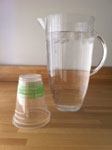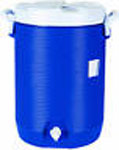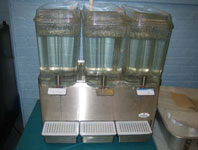Fact Sheets
Promoting Water Consumption in Schools
Problem
Water is a basic necessity of life, yet too many children do not have access to free, fresh tap water in schools. In a recent survey, at least 40 percent of responding school districts in California reported no access to free water during meals.
This poor access represents not only a lack of equity, but also a public health concern because increasing water consumption is a simple and effective obesity-prevention strategy.
As an essential nutrient with no calories, kids should be reaching for a drink of water when thirsty. Yet, recent research suggests many students may not come to school properly hydrated. Poor hydration can have adverse impacts on academic and physical performance.
Solutions
Simple and inexpensive solutions exist. Schools across the nation – from Los Angeles to New York City – have implemented unique and innovative ways to bring water to kids.
Some schools use water dispensers and cups while others depend on water jets and other methods. No one solution fits all.



Although many of these interventions are inexpensive, they do require some initial start-up investment and small on-going costs. While some solutions have emerged voluntarily, New York City has issued and implemented an executive order requiring water to be served along with every meal in schools, childcare facilities, and other settings. Recent legislation in Massachusetts requires water to be available during school meals.
Support
Encouraging water consumption is an issue that has popular, widespread, and growing support. Nutritionists, oral health experts, pediatricians, and public health advocates all understand the important health consequences.
What can you do?
- Urge legislators to enact stronger nutrition standards in schools by restricting unhealthy sweetened beverages and requiring access to healthy beverages, namely water.
- Work with your local school district to adopt and implement wellness policies to include increased free water availability and promotion.
-
Partner with local government, business, and philanthropic interests to dedicate resources and support for increased water consumption in schools.
- Local government: school district, health department, city council, utilities district
- Businesses: hardware stores (plumbing), sporting goods stores (reusable water bottles, water dispensers), grocery stores (water filters)
- Philanthropy: Rotary, Kiwanis, local foundations
- Organize local stakeholders, including local PTA groups, student groups, and nutrition and health advocates, to adopt plans to promote water consumption in schools.
